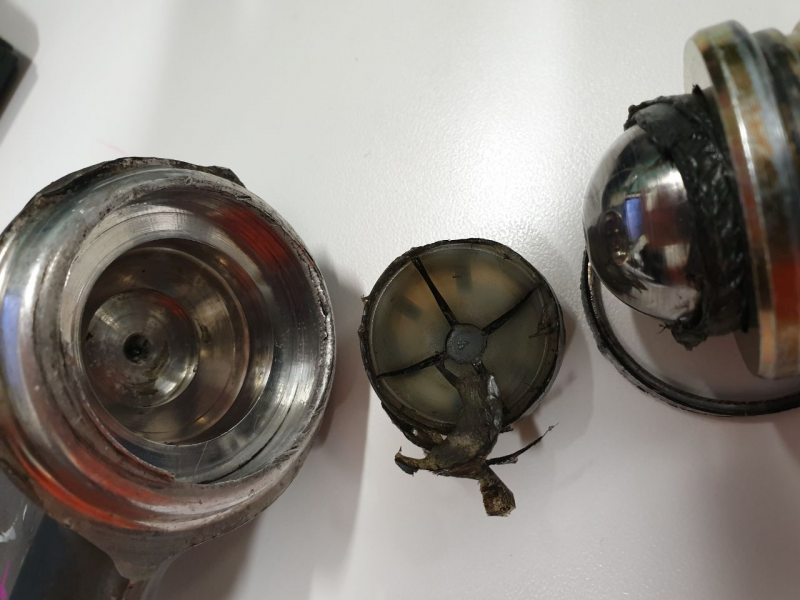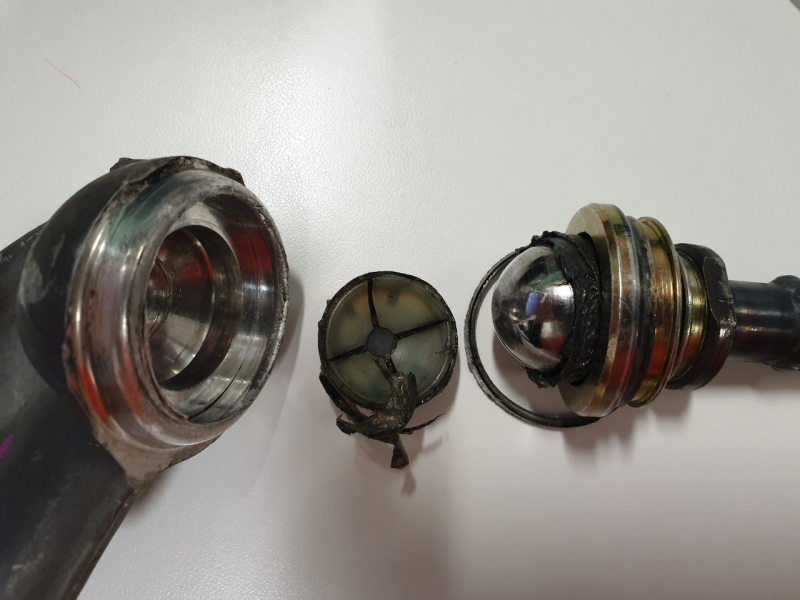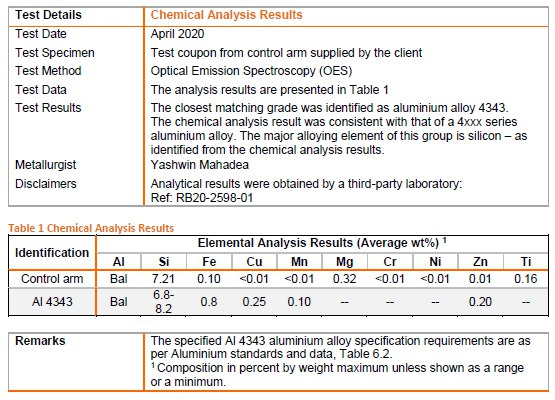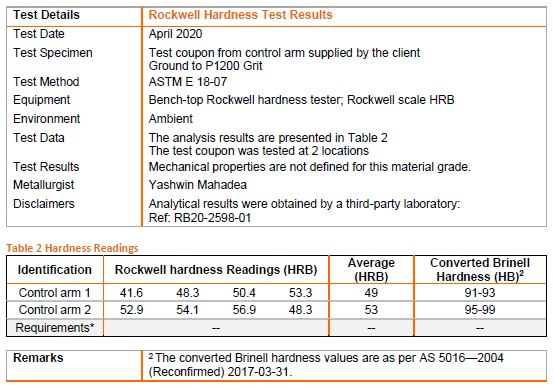So I have my ball joint back. I'll explain what we're looking at:
-Left is the cup of the ball joint. Typically the cup is a part of the ball joint and is pressed with an interference fit into the arm, however on our arms this is not the case. The cup is machined into the arm itself, this is why the joints cannot be replaced or serviced - there is no ball joint to remove!
-Centre is the lower half of the ball joint lubrication and is a simple PTFE (Teflon) plastic part. Teflon is self-lubricating but extremely soft, just rubbing on the polished ball would be enough to wear it out let alone any dirt. There is a corresponding cup on the upper half of the ball (impossible to photograph) and was originally shrink wrapped over the ball.
- Right are the golden retention rings. Assembly would've been:
- Machine out the socket
- Insert the ball (with the shrink wrapped PTFE inserts)
- Place the larger golden retention ring over the ball and press the arm to fold a metal lip over the ring to hold it in place. You can see a thin metal ring under the ball in the photos. This ball was the lip of pressed metal that retained the larger golden ring.
- The smaller golden ring would've been pressed onto the rod of the ball joint allowing the dust cover to be installed.
View attachment 69192
View attachment 69193
So what do we learn from this?
Well I'm still waiting on my lab test results from SGS (just got my cleared invoice today so I may even get the results before the end of the week!), but if it confirms 6063 or some variation of, combined with the weird manufacturing you can be certain that it was done this way to be
cheap. Double wishbone suspension despite its benefits is known as a poor choice for heavy cars due to the significant change in camber and toe that it causes during cornering. On a car like an MX-5 this loading isn't a problem but on a 1700kg many angry horse V8 durability is a serious issue. Maserati would've known this when designing the car and chose to do it anyway knowing the arms would have a short life expectancy. The implementation is arguably one of the cheapest ways they could've done it
and isn't serviceable so ensures repeat sales. If you want to buy into the conspiracy that the cars are made to last 5 years or owned by collectors and not driven, this is one of the many bits of evidence you can collect.
Going forward however it shows me a few things, the first is that it points towards a high-probability of success for the injection. There is nothing fancy going on inside the ball joint at all. Injection should just fill in the wear with more PTFE. With the ball joint apart I'll be able to do a practice run where I can see what is going on.
It also highlights the possibility of replacing the ball joint with a conventional ball joint. I'll have a look in some catalogues and see if there is anything the right size that socket could be machined out and a conventional design ball joint pressed in. This is more a luck outcome than anything, I'll have to find a part that is exactly the right size so that I only machine out the minimum to allow it to press in. However,
if this were to be possible then I would be an almost ideal outcome. Sure, we'd still be stuck with overpriced bushings from Fiat group but you would be able to fully refurbish the arms without having to manufacture new ones. This would make costs for new ball joints around $200-$400 AUD (including the machining time) and if you wanted to fully refurbish them it would be that plus two bushings per arm. So in today's money, that would be 200-400GBP per arm to be refurbished and have a serviceable joint so that the issue is gone for good.
I've also sent off for a quote to have the OEM part machined out of 6063 billet just to see what it would cost to have an exact copy of the arm made. If it comes back as something reasonable, I'll pick a ball joint and bushing size from a catalogue and resize it to fully escape the Fiat group. This option is obviously cost dependent, but if it is cheap enough this would be the perfect outcome. I would try and pick something from a common sports car so that people have the choice to run harder or softer bushings in the future.






